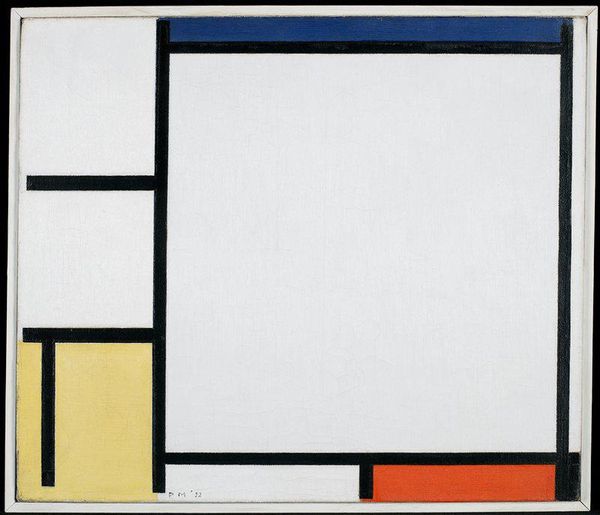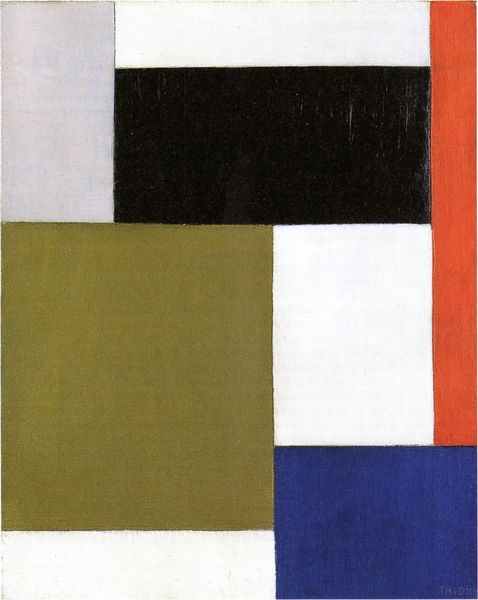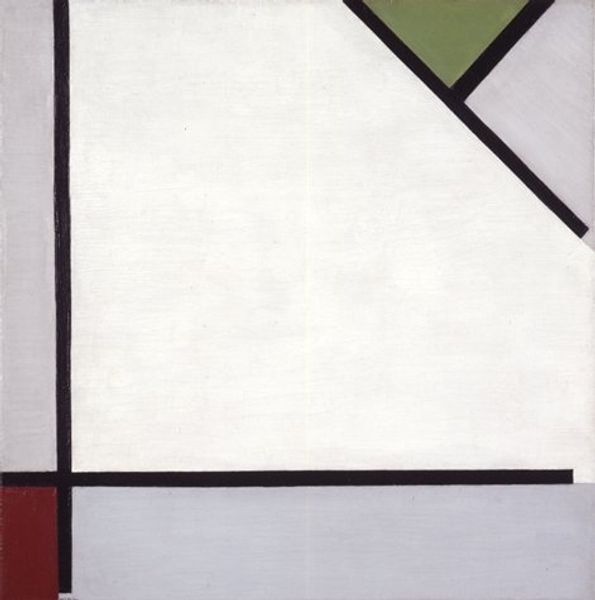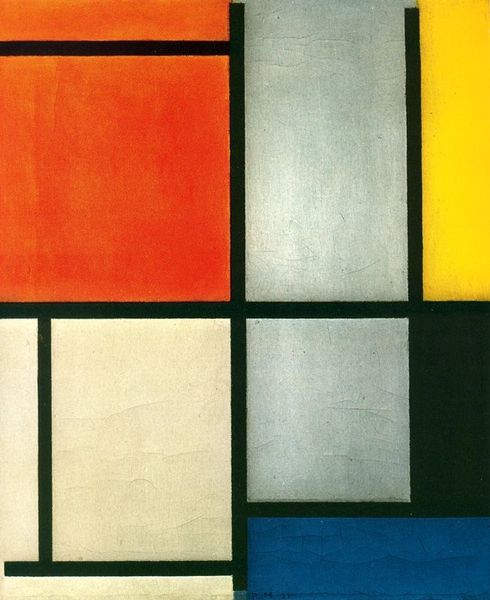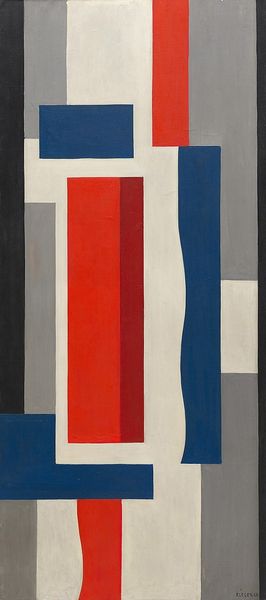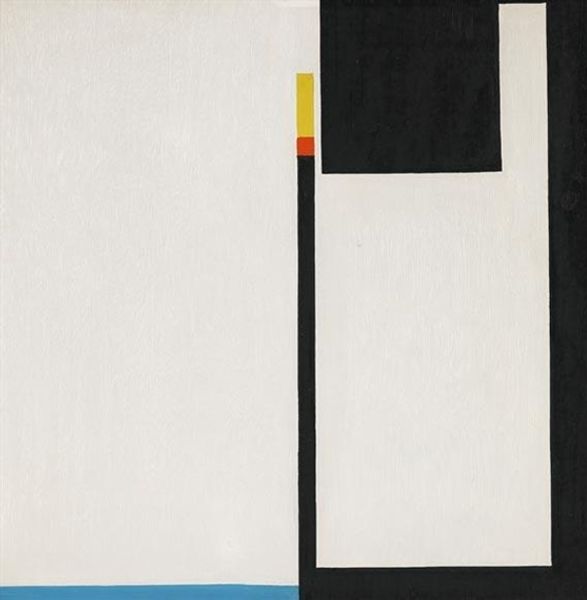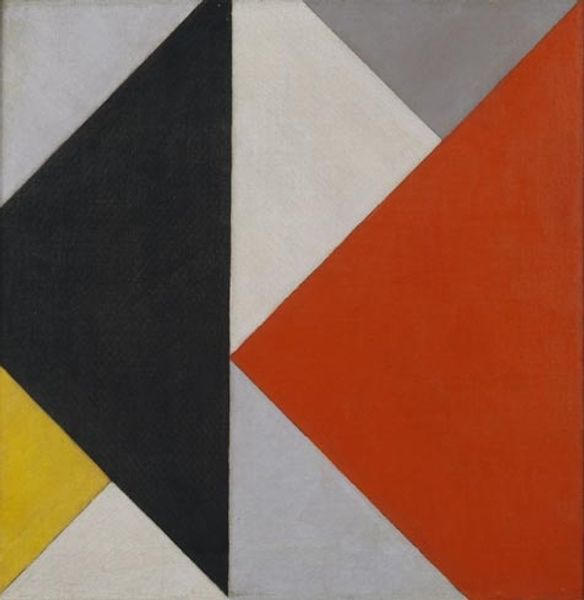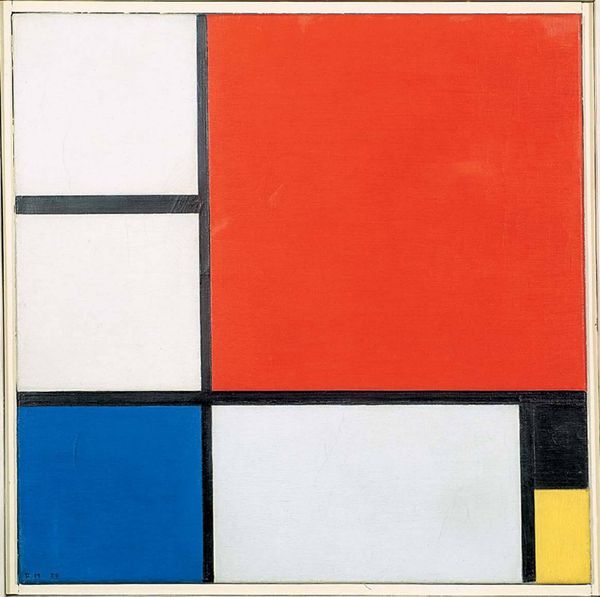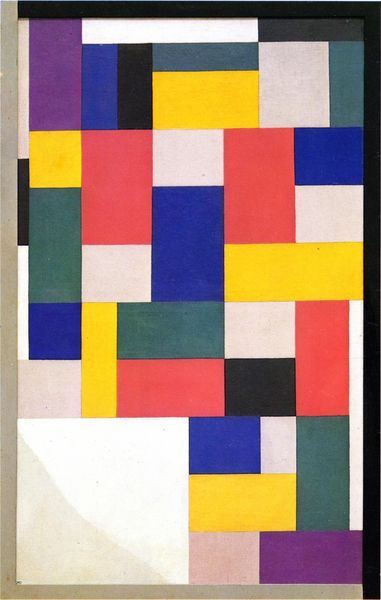
panel, painting
#
neo-plasticism
#
panel
#
painting
#
geometric
#
abstraction
#
modernism
Dimensions: 16.5 x 19 cm
Copyright: Public domain
Curator: Standing before us is Piet Mondrian's "Composition with Red, Yellow and Blue," completed in 1922. This oil on panel embodies his mature Neo-Plastic style, a radical distillation of form and color. Editor: It strikes me as incredibly ordered, almost mathematically precise. The bold black lines compartmentalize the space, and the limited palette – red, yellow, blue, and white – creates a strong visual impact. There's a calming quality too, strangely. Curator: That sense of order is key. Mondrian saw Neo-Plasticism as a means of revealing the underlying, universal structure of reality. The grid, for him, represented a harmonious balance, free from the chaos of the natural world. He thought this type of representation had profound social and even spiritual ramifications for society. Editor: Interesting. I read it more as a reflection of early 20th century anxieties about industrialization and the desire to control a rapidly changing world. Mondrian seemingly offers a rigid, systematized way of seeing things; this resonates deeply. It feels like a response, or perhaps even a pushback against the turbulent nature of identity during those years. Curator: Absolutely, those social and political influences cannot be discounted. Think about the rise of rationalism, utopian ideals and architectural styles of the era which heavily inspired artists like Mondrian to seek to represent the modern world's inner meaning in art. But, at the same time, Mondrian also explicitly spoke of his works achieving a sense of dynamic equilibrium – a kind of tension. Editor: A tension between control and freedom, perhaps? This rigid geometry, with that playful asymmetry. One large square, for example, visually dominating. Then the asymmetrical red grounding element. The impact is quite forceful. Are we meant to find stability through the balance? Curator: I think he wanted to go further, believing a Neo-Plastic artwork, placed in society could actually transform viewers by instilling new spiritual awareness. This extended, of course, into his design work—influencing architectural spaces to inspire greater social harmony. It may be viewed, now, as fairly prescriptive, but I find Mondrian's convictions genuinely intriguing. Editor: Intriguing indeed. And visually, "Composition with Red, Yellow and Blue" provides such a potent representation. It continues to influence and impact how we visually order the world around us.
Comments
No comments
Be the first to comment and join the conversation on the ultimate creative platform.
